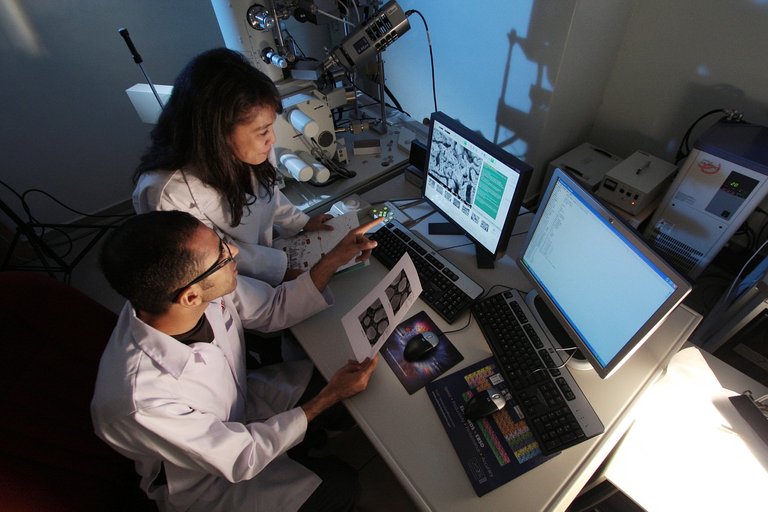Having just watched the fifth episode of series 3 of "The Flash" where Cathelyn Snow absorbed a lot of heat in an experiment with her mother in a bid to answer some questions about her "frosty superability", I was reminded of the field of Engineering that many are unaware of and I was compelled to share with you.
I am sure you are aware of what refrigeration is even if it is just a slight idea. We all have refrigerators in our homes, We buy frozen foods, We take ice-creams, We ride in vehicles with Air conditioning unit. So in one way or the other we have encountered refrigeration.
In simple words simply put that Refrigeration is the science and engineering that deals with the extraction of heat from substances through work input from an external source. However, that definition will be ambiguous as there is another allied and intertwined field of Engineering that also deals with heat extraction from substances. This is called Cryogenics.
The obvious questions here now are: What is cryogenics? How does it differ from ordinary Refrigeration? What are some of its application? Do read on to find out.

DEFINITION
Cryogenics is coined from the Greek word "cryo" meaning cold and "genic" meaning production. It is thus an Engineering field which deals with the production of substances at extremely low temperatures. Cryogenics does not only produce extreme low temperatures, it studies the effect of this low temperature on the material.
DIFFERENCE BETWEEN CRYOGENICS AND REFRIGERATION
Cryogenics and Refrigeration are both concerned with the removal of heat from a substance. However, there is a distinction between them. This distinction is the attainable temperature of each. Although a clear dividing line (single temperature) is yet to be drawn between them, scientists take the temperature of 123 K as demarcation. Thus, the term Refrigeration is applicable up to a temperature of 123 K, while cryogenics applies from 123 K to absolute zero temperature.
Furthermore, another dividing line is drawn by the National Institute of Standard and Technology,
based on the fact that most cryogens (Cryogens are fluids which are used for cryogenic applications. Examples of such include: Oxygen, Nitrogen and Helium) have boiling points lower than 93 K. They thus consider the dividing line to be 93 K.
In any case we can easily conclude that cryogenics is capable of achieving very low temperatures which are impossible using ordinary refrigeration processes.
APPLICATIONS OF CRYOGENICS
- Cryotherapy
- Production and storage of liquefied gases
Cryogenics is employed to condense real gases in order to convert them into liquid. The temperature of the gas is lowered until a temperature below its boiling point. Cryocoolers are employed for this. One type of Cryocooler is the sterling Cryocooler which is based on the reverse sterling engine (See the post by @churchboy here for more on sterling engines). Example of such liquefied gases includes oxygen, nitrogen and helium. Gases are liquefied for easy transportation and storage of larger volume and safety as they are non pressurized in this state. One very important example of this is Liquefied Natural Gas (LNG).
- Fractional distillation of air.
Fractional distillation is the separation of a substance into its constituents. Fractional distillation is carried out in a chamber known as fractionating column. The principle of fractional distillation is based on the fact each constituent of the substance have different boiling temperatures. Air is known to contain 79% Nitrogen and 21% Oxygen by volume. Nitrogen has a boiling point of 77 K while that of Oxygen is 90 K.
To achieve the separation, air is cooled to about 73 K and is then passed into the fractionating column where the separation occurs. Nitrogen is tapped from the top and liquid oxygen is tapped from the bottom of the fractionating column.
- Research
CONCLUSION
Cryogenics is a field that deals with extreme low temperature. It is related to refrigeration but it is capable of much lower temperatures. It has found widespread application in many areas.
By now I believe you understand what cryogenics is all about.
Was this insightful? Do drop your comments and contribuions.
REFERENCES
Liquid Oxygen. Safetygram 6. Air Products and Chemicals, Inc., 2015 (38983) 900-13-078-US-May17
A. M. Papadopoulos and C. J. Koroneos, (2004), REFRIGERATION AND CRYOGENIC
SYSTEMS, in Air Conditioning - Energy Consumption and Environmental Quality, [Ed. Matheos
Santamouris], in Encyclopedia of Life Support Systems (EOLSS), Developed under the Auspices of the UNESCO, Eolss Publishers, Oxford ,UK, [http://www.eolss.net] [Retrieved February 6, 2012]



Being A SteemStem Member
Congratulations, your post was discovered and featured by @OCD in its daily compilation 208!
You can follow @ocd – learn more about the project and see other Gems! We strive for transparency.
If you would like your posts to be resteemed by @ocd to reach a bigger audience, use the tag #ocd-resteem. You can read about it here.
@ocd now has a witness. You can vote for @ocd-witness with SteemConnect or on Steemit Witnesses to help support other undervalued authors!
Thank you that you did the comment for me.
I had close to zero knowledge about cryogenics before reading this your explicitly written post.
I have learnt a new thing today, thank you for this. And welcome to Steemit.
I'm glad I could impart some knowledge to you. Do stay in touch as there's more to come. Thanks for you response.
I find this article very knowledgeable and helpful. You did better explaining the relationship between cryogenics and refrigeration. Keep doing what you are doing sir.
Thanks for the comment sir
A Very innovative and intelligent post.thumbs up.
Thanks for the kind words @olusegun3386
This is an informative post.With cyrogenics,there is hope that elderly and terminally ill people can still be rescuscitated and restored to good health in the near future.GREAT
You are speaking of the area of reanimation also called cryonics. Although reanimation has not been achieved, scientists hope it will be possible in the nearest future.
Thanks for your response.
Alright,you are welcome...Impressive